Recently published research by GUARD Archaeology Ltd reveals that the location of a housing development in Larkhall was already popular in prehistory.
The discoveries were made during archaeological excavations undertaken by GUARD Archaeology prior to the building of new houses in 2014, the results of which have only been revealed now once post-excavation analyses were completed.
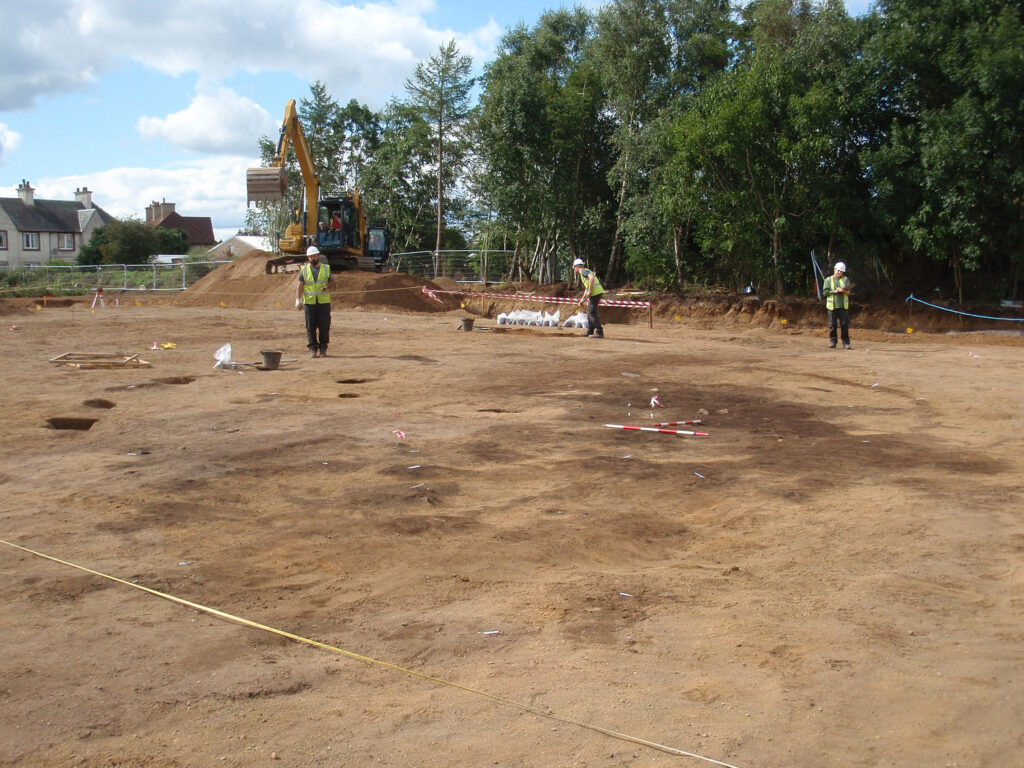
The earliest evidence of settlement on this site which overlooks the River Avon, was a small ephemeral circular hut that was radiocarbon dated to the eighth-ninth millennia BC. This was one of the earliest Mesolithic encampments ever found in Scotland, when small groups of hunter-gatherers were moving into northern Europe after the retreat of the permanent ice sheets and the return of vegetation, plants, woodland and animals.
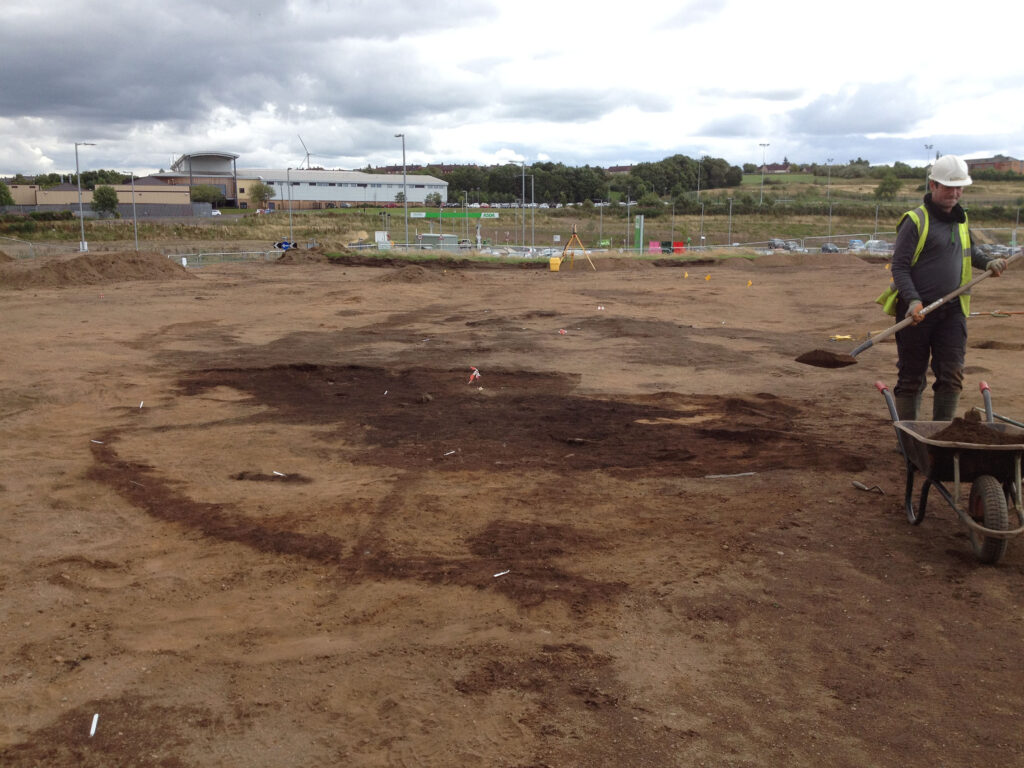
Some seven thousand years later, another group of people settled this same location. Located in the middle of the promontory was a substantial roundhouse, radiocarbon dated to sometime between the sixteenth and thirteenth centuries BC, during the Bronze Age. A ring of eight large post-holes and the remnants of the thick oak posts that once supported the building’s large conical roof were revealed by the GUARD Archaeologists. This ring of post-holes was surrounded by a circular gully that held the outer wall in place. Fragments of daub from this outer wall survived, showing how the inhabitants kept their house windproof. Sherds of pottery vessels were also found, in pits and post-holes within the centre of the building, and sealed by an organic deposit that may have been part of the building’s roof preserved by waterlogging. Radiocarbon dating indicated that the building was abandoned sometime between the twelfth and tenth centuries BC.
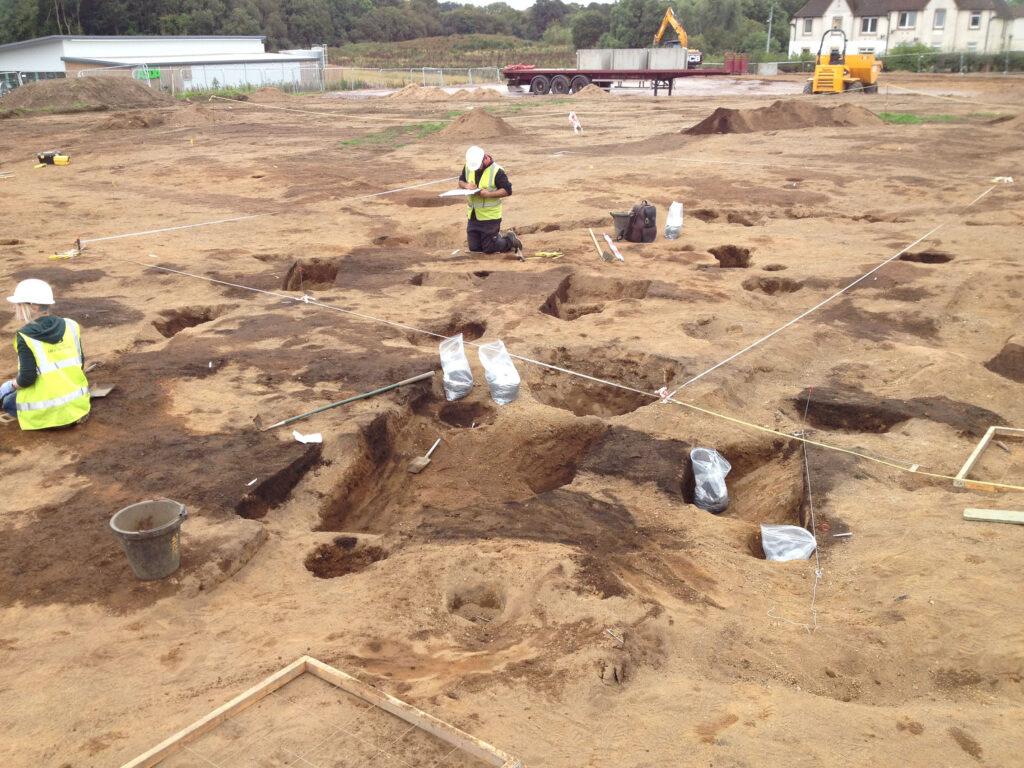
Over a thousand years later, a small rectangular timber building was built on this same location, overlying the Bronze Age roundhouse. It contained a large a fire-pit that was dated from the first to the third century AD, placing it occupation during the Iron Age, when the threat of Rome lay to the south. The building also contained evidence of dung suggest that at least part of it functioned as a small byre for animals.
These chronologically distinct phases of occupation emphasis the attractiveness of this place in the landscape of south Lanarkshire to successive groups of people from the Mesolithic to the Iron Age.
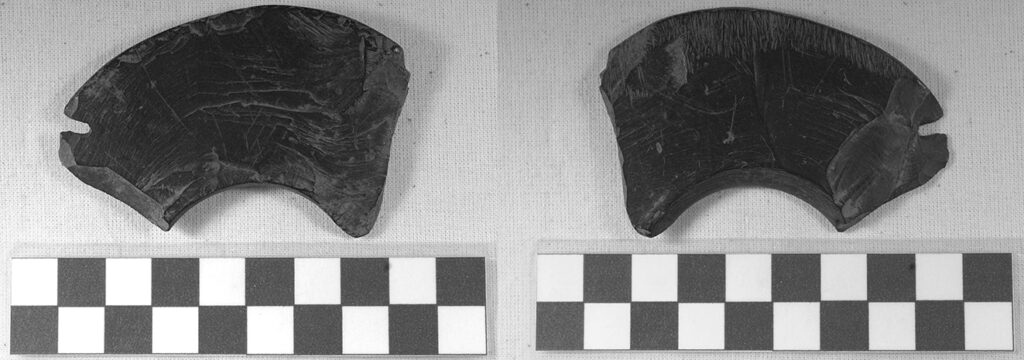
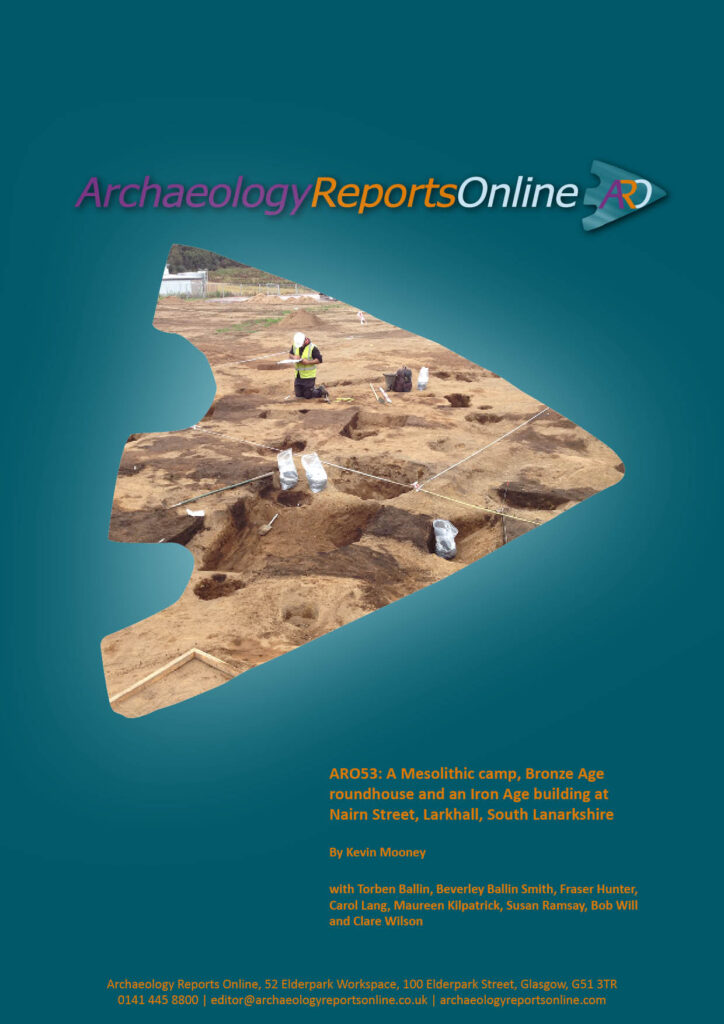
The archaeological work was funded by Bracewell Stirling Consulting and was required as a condition of planning consent by South Lanarkshire council who are advised on archaeological matters by the West of Scotland Archaeology Service, who considered there to be a potential for hitherto unknown archaeology to survive here.
ARO53: A Mesolithic camp, Bronze Age roundhouse and an Iron Age building at Nairn Street, Larkhall, South Lanarkshire by Kevin Mooney is freely available to download from Archaeology Reports Online.
